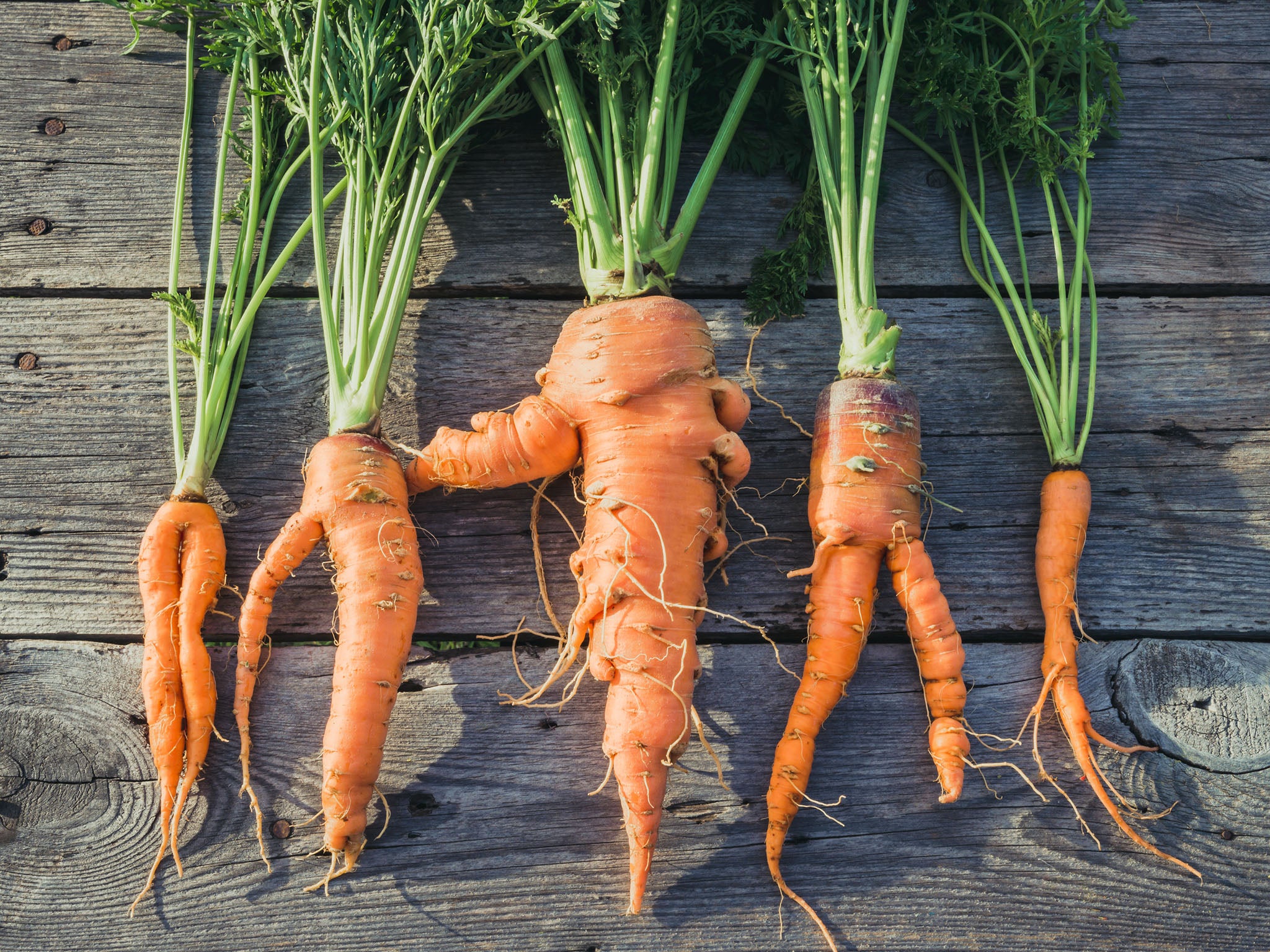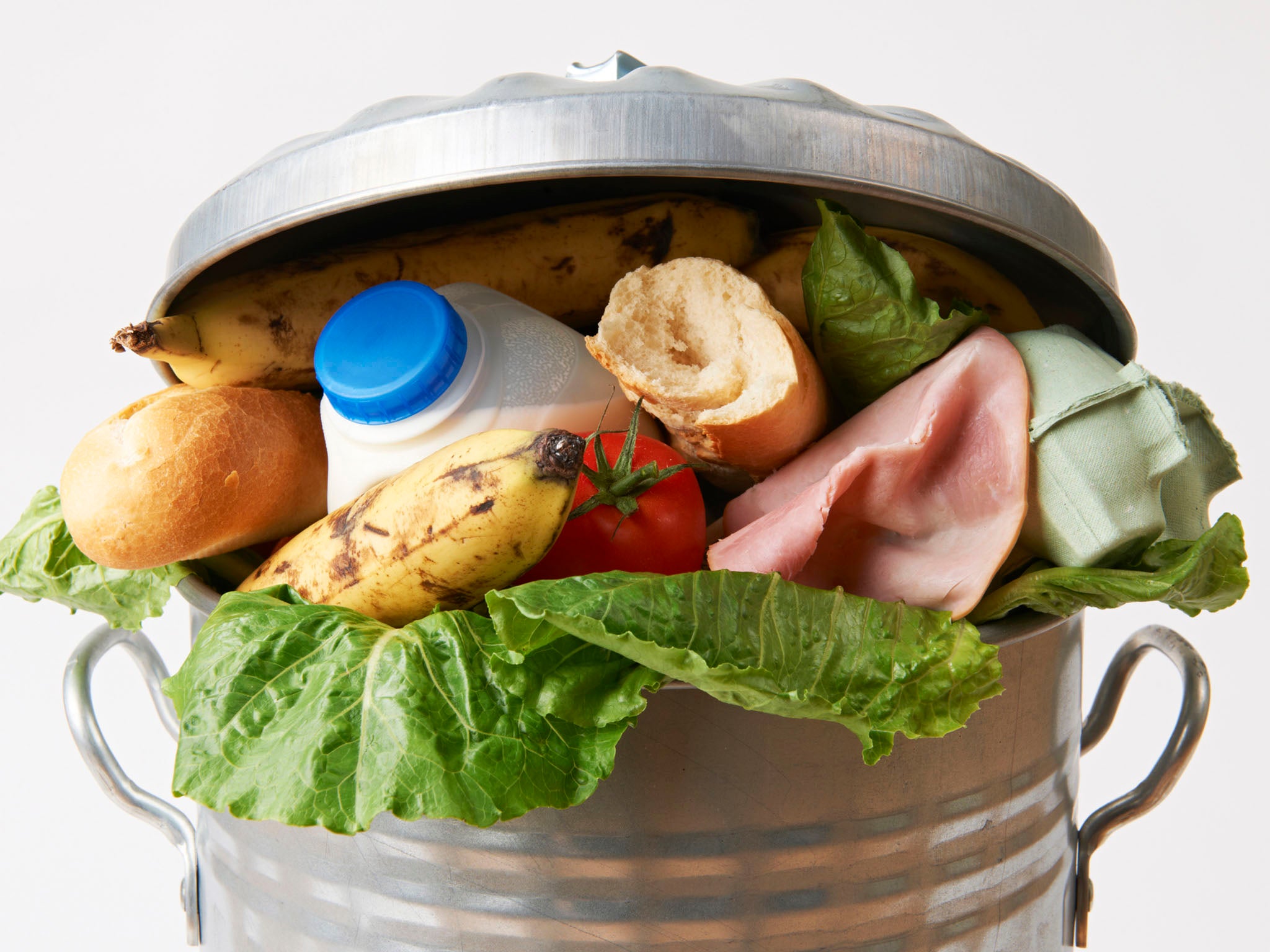Ugly vegetables are a major cause of food waste
Reports show that 25 per cent of apples, 20 per cent of onions and 13 per cent of potatoes grown in the UK are still wasted on cosmetic grounds. Miriam C Dobson and Jill L Edmondson report

“Ugly” or “wonky” veg were blamed for up to 40 per cent of wasted fruit and vegetables in 2013, as produce was discarded for failing to meet retailer appearance standards. About 1.3 billion tonnes of food is wasted worldwide every year and, of this, fruit and vegetables have the highest wastage rates of any food type. But just how much of that is due to “ugly veg” being tossed by farms and supermarkets? The biggest culprit for food waste may be closer to home than we’d like to admit.
“Ugliness” is just one reason among many for why food is wasted at some point from farm to fork – there’s also overproduction, improper storage and disease. But the problem of “wonky veg” caught the public’s attention.
A report published in 2017 suggested that sales of “wonky veg” have risen in recent years as retailers have acknowledged the problem with wasting edible food, but it’s estimated that up to 25 per cent of apples, 20 per cent of onions and 13 per cent of potatoes grown in the UK are still wasted on cosmetic grounds.
Morrisons reported that consumers had begun to buy more misshapen food, whereas Sainsbury’s and Tesco both report including “wonky veg” in their recipe boxes, juices, smoothies and soups.
Not all ugly veg is wasted at the retail point of the supply chain however. Wrap, a charity that has been working with governments on food waste since 2000, has investigated food waste on farms and their initial findings suggest a major cause of fruit waste is due to produce failing aesthetic standards. For example, strawberries are often discarded if they’re the wrong size for supermarkets.
The National Farmers’ Union also reported in 2014 that around 20 per cent of gala apples were being wasted prior to leaving the farm gate as they weren’t at least 50 per cent red in colour.

Home is where the waste is
Attitudes seem to be changing on “ugly veg” at least. Morrisons ran a campaign to promote its “ugly veg” produce aisle and other supermarkets are stocking similar items. Despite this, household waste remains the biggest culprit for food waste in the UK. Just under 5 million tonnes of food wasted in the UK occurs in households – a staggering 70 per cent of all post-farm gate food waste.
A further million tonnes is wasted in the hospitality sector, with the latest government report blaming overly generous portion sizes. This suggests that perhaps – despite the best effort of campaigns such as Love Food Hate Waste – farms and retailers have been unfairly targeted by the “wonky veg” campaigns at the expense of focusing on where food waste really hits home. The 2013 Global Food Security Report put the figure for household and hospitality waste at 50 per cent of total UK food waste.
There are some signs we’re getting better at least. Wrap’s 2015 research showed that, at the household level, people now waste 1 million tonnes of food per year less than they did in 2007. This is a staggering £3.4bn per year saved simply by throwing less edible produce away.
As climate change and its influence on extreme weather intensifies, reducing waste from precious food harvests will only become more important. Knowing exactly where the majority of waste occurs, rather than focusing too much on “wonky veg” in farms and supermarkets, is an important step towards making sure everyone has enough affordable and nutritious food to live on.
During the UK’s “Dig for Victory” campaign in the Second World War, a large proportion of the population had to grow their own fruit and vegetables. Now the majority of people live in cities and towns – typically detached from primary food production. In the UK, the MYHarvest project has started to uncover how much “own-growing” contributes to the national diet and it seems demand for land to grow-your-own is increasing.
Research in Italy and Germany found that people who grow their own food waste the least. One way to fight food waste at home then – whether for “wonky” fruit and vegetables or otherwise – may be to replace the farm-to-fork supply chain with a garden-to-plate approach.
Miriam C Dobson and Jill L Edmondson are researchers at the University of Sheffield. This article originally appeared on The Conversation

Join our commenting forum
Join thought-provoking conversations, follow other Independent readers and see their replies
Comments